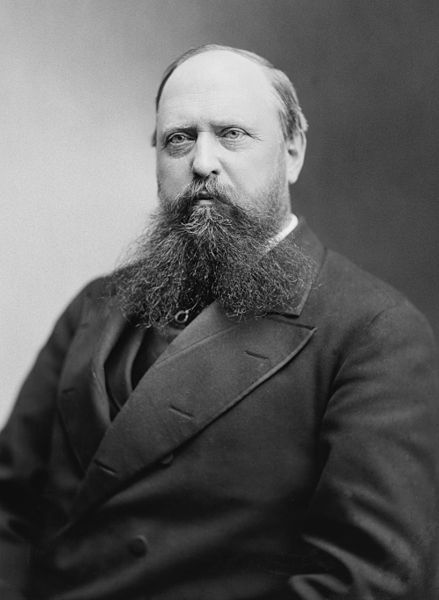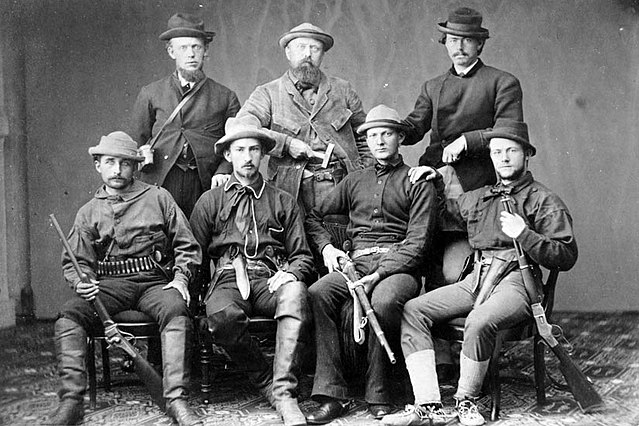Brontosaurus is a genus of herbivorous sauropod dinosaur that lived in present-day United States during the Late Jurassic period. It was described by American paleontologist Othniel Charles Marsh in 1879, the type species being dubbed B. excelsus, based on a partial skeleton lacking a skull found in Como Bluff, Wyoming. In subsequent years, two more species of Brontosaurus were named: B. parvus in 1902 and B. yahnahpin in 1994. Brontosaurus lived about 156 to 146 million years ago (mya) during the Kimmeridgian and Tithonian ages in the Morrison Formation of what is now Utah and Wyoming. For decades, the animal was thought to have been a taxonomic synonym of its close relative Apatosaurus, but a 2015 study by Emmanuel Tschopp and colleagues found it to be distinct. It has seen widespread representation in popular culture, being the archetypal "long-necked" dinosaur in general media.
Brontosaurus
An 1896 diagram of the B. excelsus holotype skeleton by O.C. Marsh. The head is based on material now assigned to Brachiosaurus sp.
Obsolete mount of an apatosaurine referred to B. excelsus (specimen AMNH 460) with sculpted skull, completed in 1905, American Museum of Natural History
Infographic explaining the history of Brontosaurus and Apatosaurus according to Tschopp et al. 2015
Othniel Charles Marsh was an American professor of Paleontology in Yale College and President of the National Academy of Sciences. He was one of the preeminent scientists in the field of paleontology. Among his legacies are the discovery or description of dozens of new species and theories on the origins of birds.
Othniel Charles Marsh
Othniel Marsh (center, back row) and assistants ready for digging in 1872
Hesperornis regalis, a species of ancient flightless bird with teeth, as drawn by Othniel Marsh, and published in his book, Odontornithes: A Monograph on the Extinct Toothed Birds of North America.







